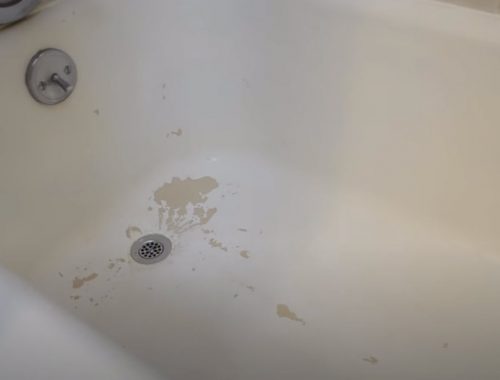8 Things to Know About Termites in California
Termites are the most damaging pests to property in the United States, generating approximately $5 billion in damage each year. We want to advise you on what to check for in your house if you suspect termites to prevent your property from joining that alarming number.
What Do Termites Look Like?
The most straightforward technique to detect a termite infestation is to locate the termite itself. While most people have heard of termites, many do not know what they look like. While trying to self-diagnose a termite infestation, there are a few crucial distinctions to keep in mind, including:
- Color Termites are often lighter in color than ants, ranging from a creamy white to a brownish tone, as opposed to the deeper browns and blacks characteristic of ants.
- Termites are typically 18 to 1 inch long. Of fact, this is the size of the most common termite caste; the queen of a colony is considerably bigger, reaching up to 6 inches in length with her huge belly.
- The significant difference may be noted in body form. Termites have thicker waists than ants, who have constricted waists. They also have shorter legs and straight antennae than ants’ curved antennae.
- Wings As you can see, termites don’t commonly have wings, but when they do, they have two sets of branches that are equal in length. Ants’ wing pairs vary in size.
What Are The Different Types Of Termites?
Although over 45 species of termites are in the United States, they typically fall into one of three types. Its classification is determined by its appearance, nesting place, and behavior. The three most frequent varieties of termites are:
Subterranean Termites
Subterranean termites, the most prevalent termite, nest in soils across the continental United States. Since they develop the enormous nests of any termite species, they are the leading source of damage to houses and property. These termites will dig mud tunnels under your lawn to get to their food supply, the delicious wood of your home.
Drywood Termites
Drywood termites, as the name implies, prefer to live in dead or dying dry wood, such as dead trees, structural beams, or solid hardwood flooring. They will do everything possible to avoid dirt, so watch for them on and around your land. While bigger than their underground counterparts, they have smaller colonies, so they wreak slower harm. Of course, this doesn’t mean they don’t pose a significant danger to your house.
Formosan Termites
The most dangerous termites are, without a doubt, Formosan termites. They are tough to remove once lodged because of the extensive paths between their nest and food supply. They also can set up temporary shops in high-food places, like your house, and even if you remove any nesting in your home, the top nest remains.
Do Termites Have Wings?
The primary explanation is that termites have wings. Before you start picturing swarms of flying termites invading your house, remember that only certain castes have wings; even then, they only pass at particular periods of the year. The alate nymphs, known as termite swarmers, are the only termite caste in a colony with wings.
Signs of a Termite Infestation
However, given the damage that termites can inflict, it is relatively straightforward to recognize indicators of a severe termite infestation if you know what to look for. The following are the most prevalent indicators of a termite infestation:
Hollowed-out wood: You may be able to hear it as you walk through it.
Blisters on oak flooring resemble little bubbles on your floor.
Pellets or droppings will resemble coffee grounds.
They have ant-sized bodies or wings.
Mud Tubes: Tubing that may be found outdoors or in your crawlspace.
Are Termites Dangerous to Humans?
Although termites may significantly damage your property, they offer little to no risk to you or your loved ones other than bringing the structure down on top of you. They are not known to contain any dangerous illnesses that might be spread, nor do they exhibit any desire to bite or sting humans until provoked.
What Attracts Termites to My House?
Termites, like many insects, are primarily seeking a food supply. Since wood is their primary food source, dwellings seem exceedingly tasty to them. Termites also like wetness—moisture in wood, moist patches in the house, and any external cracks. Termites like warm temperatures; therefore, the spring, early summer, and autumn seasons are the most vulnerable to termites. When you combine the heat and humidity, it’s easy to understand why the south is the termite capital of the United States.
How to Prevent Termites
Avoiding termites is always better than removing termites, and it will save you money in the long run. Termite prevention tips include:
- Keep outside plants and tree branch development away from the house. Keeping all shrubs and leafage away from home prevents subterranean termites from spreading from your yard to your house.
- Keep your foundations dry – Whether you have a crawlspace, basement, wood, or another form of foundation, keeping it moisture-free is critical. During severe rain or flash floods, look for any persistent wet places to determine possible moisture concerns.
- Remove all yard debris regularly – Make sure that all yard debris, from falling leaves to mulch, is kept away from the house. This involves ensuring that your gutters are cleaned regularly.
- Keep an eye out for flying termites during the swarming season – As previously said, flying termites are the breeders; therefore, keeping them away from your property is critical. If you see them buzzing about, keep your windows closed, turn off your lights at night, and ensure no openings in your house.
How to Get Rid of Termites
You’ve probably made it this far. already know a lot of stuff and want to know how to remove those pesky termites from your house. Although we would always encourage expert assistance, mainly because there may already be significant termite damage in the property, there are several things you may do on your own:
- Termite products – Although the efficiency of termite removal solutions varies, they all assist in destroying termites. There are two types of products to choose from spot treatments and bait treatments.
- Beneficial nematodes – These tiny roundworms are termite parasites and will soon destroy them in a couple of days.
- Essential oils, such as orange and neem, may kill termites in several ways, disrupting the shedding process and egg-laying.
- A boric acid is a well-known approach for eliminating termites since it disables their whole system.
Hopefully, you’ve learned to recognize termites and keep your house safe from termite infestations. As usual, we suggest contacting the pros at Escondido-pest-control.com for all of your termite removal requirements.
You May Also Like

How AI Is Impacting The World Of Sports
February 17, 2020
The 5 Biggest Technology Trends In 2021
January 4, 2021